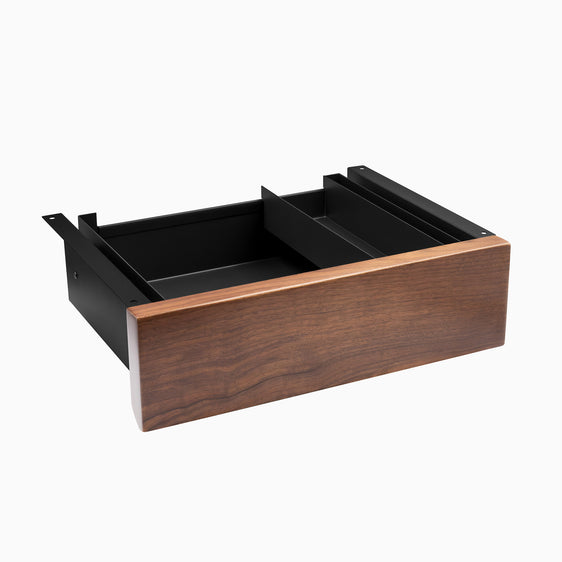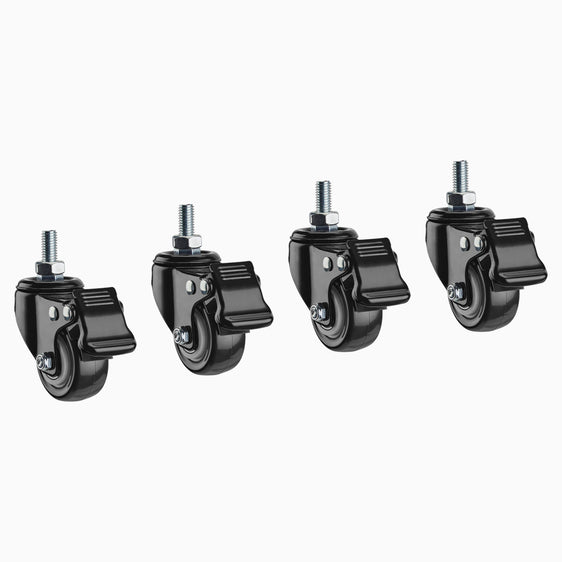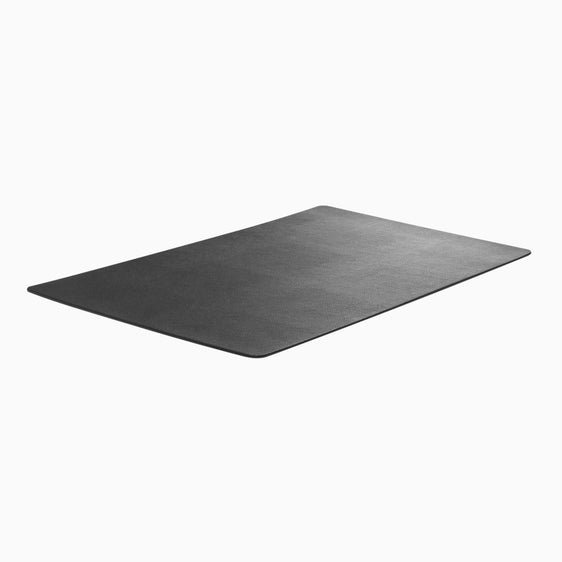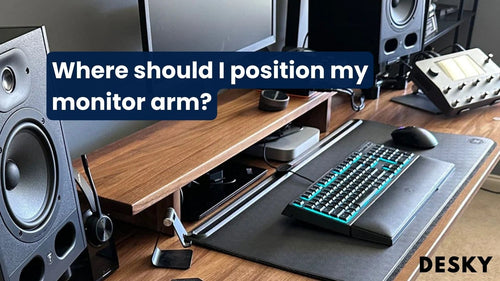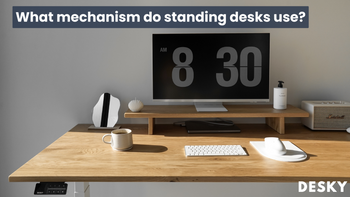
FAQ
What mechanism do standing desks use?
Hayden AdamsThe fundamental question, What mechanism do standing desks use?, has diverse answers. Depending on the type of standing desk you choose, it may operate via a manual or electric mechanism.
To answer this question more efficiently, we will dive into their differences and finally, the components that make up these mechanisms.
Mechanics Of Standing Desk
Among the various mechanisms of standing desks, the pneumatic counterbalance method has a key role. It employs a gas-filled cylinder, aiding in lifting the work surface.
Much like this, a counterpart system using spring tension facilitates the elevation of the desk. It operates on a hydraulic principle where gas or fluid flows through or surrounds a piston, thereby balancing pressure on both sides. These mechanisms make adjusting your desk smooth and effortless.
Motors Used In Standing Desks
When it comes to the type of motor used in standing desks, typically there are two variants incorporated. Firstly, a single motor runs one vertical leg of the desk, offering basic functionality.
Secondly, dual motors enhance stability and the ability to handle heavier weight, powering two columns independently. With a dual-motor setup, it grants greater stability and a larger lifting capacity. Depending on the quality of the desk, the longevity of the motor varies greatly.

For a more in-depth comparison between the two, you can refer to our article on Single vs. Dual Motor Standing Desk: Which Is Better?
Is dual motor better for standing desk?
When it comes to deciding between single motor or dual motor for your standing desk, your priority would typically lie in your desktop's weight load.
Desk structures equipped with two motors undeniably offer a better balance for larger burdens. Two motors can provide a more stable and smooth adjustment, which is crucial when handling substantial load capacities.
Is a single motor standing desk enough?
Standing desks powered by a single motor tend to exhibit a fair level of reliability. They often have adequate lifting capacity suitable for common use cases.
Motors in these desks are embedded with hall sensors- novel mechanisms that observe the number of turns, as well as their direction made by the motor. This makes single motor desks efficient in both functionality and dependability despite handling less weight as compared to their dual-motor counterparts.
Electric vs. Manual Height Adjustable Desks
Whether you choose a manual or an electric adjustable desk, both provide the flexibility to adjust your workspace to your comfort. But the core difference lies in the adjustment method.
Electric standing desks use a control panel to drive their motorized lifting columns on user demand. Hence, standing desk adjustments are as effortless as pressing a button.
Conversely, with manual standing desks, you will generally have to engage in a manual operation (such as rotating a hand-crank) to adjust your desk's height. Therefore, considering convenience and ease of usage, electric standing desks have an edge over their manual counterparts.
For more details on these three's differences, head on over to our Electric vs. Manual Crank vs. Converter Comparison.
{{ spec_dual_desk_frame }}
How Manual Standing Desks Work
In environments where the regular power supply is unavailable or electric usage might pose a health risk, manual standing desks find their use.
These desk types use the manual turning of a crank handle for height adjustments. The mechanism is simple yet effective—turn the handle, change the height. Moving up or down, the path is all in your hands.
Different Mechanisms Of Manual Standing Desks
Standing desks, especially manual types, operate devoid of electronic components, relying on a structured system for height adjustment.
It's important to note that each model of manual standing desk features a variety of components designed for this purpose. These components may include:
- Adjusting knobs: They can adjust desk height by twisting them.
- Crank mechanism: It allows for managing the desk's height by cranking a handle.
- Sit-stand mechanism: Its functionality relies on adding or removing supports to change the desk's height.
- Spring apparatus: It uses a spring to dictate desk height changes.
- Gas cylinders: This method makes use of a hand-adjustable gas cylinder.
Pros of Manual Standing Desks
The Price Tag
The hand crank standing desk has many of the options of electric standing desks with the benefit of lower cost. And there is no need to compromise on quality either.
Requires No Electricity
Power outage issues will not put you out of action with hand crank standing desks. You are not tethered to one place since you do not need electricity to adjust height settings and the hand crank gives you more exact control, going from sitting to standing position; an electric desk may only allow pre-programmed height levels.
{{ spec_air_lift_zero_desk }}
The Manually Adjustable Air Lift Sit Stand Desk from Desky offers the best of both worlds; all the lifting power of an electric standing desk, with a pneumatic air cylinder worked by a lever, generating enough pressure to smoothly raise the desk in seconds. No need for electricity yet all the benefits of a sit stand desk from wherever you work.
More Reliable
Not a lot can go wrong with a manual standing desk. These are some of the most reliable desks out there, many of them working faultlessly for 10 plus years. The fact that it has no motor or electronics to break down speaks for itself.
Cons of Manual Standing Desks
Slower Height Adjustment
The time and effort required to take crank desks from sit to stand is a drawback. A user would typically need many turns of the handle and some physical effort to achieve the 10 to 15 inch difference between sitting and standing.
Lower Weight Capacity
For a conventionally shaped desktop, a manual sit stand is not going to have the same lifting capacity as an electric standing desk. And less lifting capacity means more turns of the handle, more effort and more time needed to go from sitting to standing.
Uneven Loading
A crank desk requires equipment to be spread out evenly to balance the load across both columns, otherwise, turning the handle requires more physical effort and the columns may rise at different speeds, tilting the top, leading to instability, potentially damaging the mechanism and causing your equipment to fall off the desk.
Mechanics Behind Electric Desks
A sophisticated mechanical structure called an electric desk lift, made possible by electric lifting columns, is at the core of an electric adjustable desk's functionality. These raising structures replace traditional desk legs.
But unlike ordinary desk legs, these special columns empower users to alter desk height on-demand. The primary operator of this elevation control is the control system. This crucial system fulfills your command to increase or decrease the table height.
Your input gets translated into an electrical signal that activates the motors inside the lifting columns to adjust your desk to the desired height. Hence, at the touch of a button, you can transition your regular desk into a standing desk!
Electric standing desks reliability
Standing desks that employ electronic motors for height-adjustment boast of greater dependability compared to their hand-crank counterparts. Why? This leans back on our main topic of interest - the motor. Electronic standing desks eliminate the load-balancing issues that manual adjustable models can suffer from, thanks to their electric motors.
With the touch of a button, you can control the descent or ascent of your desk without breaking a sweat. This motor-driven operation is a game-changer and makes it the ideal choice.
How electric standing desks are powered
Turning a traditional desk into an adjustable standing desk involves using electric lifting columns. An electric motor powers these columns, replacing static legs and powering the desk's height adjustment capability.
How to operate your adjustable height desk
Operating an electric height adjustment desk is incredibly seamless. As previously noted, the control system plays a vital role in desk operations. You will mostly find a control panel (often located on the desk's side) containing buttons for raising or lowering your desk.
By pressing these, you command the control system to trigger the electric lift and adjust the height.
Do standing desks need to be plugged in?
Yes, electric adjustable desks need a power source to operate since their primary mechanism relies heavily on electricity for control and actuation. Typically, they are designed to plug into standard wall outlets.
Nevertheless, some manufacturers may offer battery packs to power the desk. Understandably, these may lower the load capacity and slow the desk's operational speed.
{{ spec_dual_hardwood_desk }}
Electric vs. Manual Crank vs. Converter: Which Standing Desk To Choose
Manual standing desks are great for people who want a budget-friendly sit-to-stand option, don’t mind physically adjusting the desk and don’t move from seated to standing very often.
If you are a mover; changing position every hour, then, you’ll thank yourself for investing in an electric standing desk after moving it 8 times in one day.
If you just want to give sit stand desks a go then a converter is a great entry-level option. If the practice suits you, upgrade at a later date.
How much weight can a sit stand desk lift?
Generally, height-adjustable standing desks demonstrate remarkable weight-handling capabilities. Many of these versatile pieces are capable of supporting loads ranging from 150 to 310 pounds.
This capacity is robust enough for typical office essentials. An added advantage lies in desks equipped with dual-motor systems, which offer increased lifting power and reduce back discomfort.
Key Factors Influencing Weight Capacity
- Dual-motor system: This feature enhances lifting power and ensures smooth height adjustment.
- Configuration and design: The structural design, materials used and desk configuration significantly affect the weight it can bear.
General Weight Support of Desks
As a point of reference, the average desk registers 42 pounds and accommodates a load of roughly 300 pounds for quality, durable models.
However, the size, shape, and material components do warrant variations in weight-carrying efficiency. For desks, practicality directly corresponds to their robustness and construction quality.
What about floating desks?
With proper installation, floating desks prove to be sturdy workstations. They can comfortably bear loads anywhere between 100 and 200 pounds.
However, the brackets used for mounting have their respective weight limits. It's essential to ensure these brackets are securely fixed into wall studs for optimal stability.
Lifespan Of Standing Desk Motors
It's worth noting that electric height-adjustable desks can have their shortcomings. For instance, their motors could burn out, their electrical wires could break, or voltage issues could stall the desk altogether.
On top of this, the wiring system could, in the worst-case scenario, catalyse an electrical fire due to liquid spills on the desk. However, keep in mind that these instances are not the norm, and most high-quality standing desks are built to withstand the regular wear and tear of office life.
Hence, we always recommend buying only from reputable and trusted retailers, such as Desky. Desky offers a range of high-quality electric height-adjustable desks that are designed to be durable, stable, and safe.
Standing Desk Breakdown
Even though mechanics might frail, remember that electric adjustable desks, are generally fairly reliable. But if these situations occur, the best solution is to contact the product's support team for professional assistance.
Do standing desks use a lot of electricity?
Standing desks are designed to be energy-efficient. While they do consume electricity, it’s not a significant amount, especially when compared to other office equipment. Take our Desky Dual Rubberwood Sit Stand Desk for example. While on standby, the power consumption is a negligible 0.1 watts.
Cost of using a standing desk
The motors in electric sit-stand desks are designed to be energy-efficient, often using between 100-200 watts when in operation. Many electric sit-stand desks have low power consumption in standby mode, often less than a few watts.
The overall impact on your electricity bill is generally negligible. For instance, even with frequent adjustments throughout the day, the cost is likely to be less than a few dollars per year.
What happens when a standing desk loses power?
If you're worried about what happens when there's a power outage, rest assured. The standing desk motor only operates during desk movement.
In case of a power loss, the only thing you forfeit is the desk's adjustability. This could be a minor inconvenience at most, stressing the fact that an adjusted desk has a plethora of benefits.
Should your standing desk be manual or motor?
Both manual and electric standing desks offer similar health benefits. Electric desks are known for their smooth operation, while manual desks are advantageous due to their affordability.
Power outages do not affect manual desks because they use a hand crank mechanism for adjustment. While they require more physical effort to adjust positions, they are cheaper and need less maintenance. Explore more about these options in our Standing Desks & Adjustable Sit-Stand Desks collection.
Conclusion
In summary, the answer to What mechanism do standing desks use? is multi-faceted. Both manual and electric standing desks employ unique mechanisms offering various advantages.
While the comfort of using an electric desk may appeal to some, the economical and less complex structure of a manual desk could be more appealing to others. At the end of the day, selecting a desk that meets your needs and preferences is of paramount importance.


